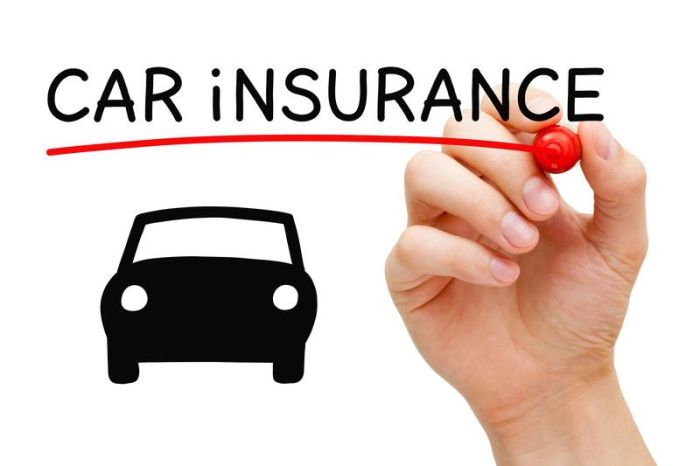
Changing insurance to new car – Purchasing a new car is an exciting experience, but it also brings with it the responsibility of obtaining appropriate insurance coverage. Navigating the process of changing insurance to a new car can be daunting, but with the right information and preparation, you can ensure a smooth transition and protect your investment.
Coverage Comparison: Changing Insurance To New Car

Switching insurance for a new car requires careful consideration of coverage options. Different coverages provide varying levels of protection and impact your insurance premiums. Understanding the differences between these options is crucial for making informed decisions.
Essential Coverages
- Liability Coverage:Protects you against legal claims for injuries or property damage caused to others while driving your car.
- Collision Coverage:Covers repairs or replacement of your car in case of a collision with another vehicle or object.
- Comprehensive Coverage:Provides protection against non-collision events like theft, vandalism, or weather damage.
Optional Coverages
- Uninsured/Underinsured Motorist Coverage:Protects you if you’re hit by a driver without insurance or with insufficient insurance.
- Personal Injury Protection (PIP):Covers medical expenses and lost wages for you and your passengers in an accident, regardless of fault.
- Rental Reimbursement Coverage:Provides compensation for a rental car while your insured car is being repaired or replaced.
Deductibles and Premiums
The deductible is the amount you pay out-of-pocket before insurance coverage kicks in. Higher deductibles typically result in lower premiums. The premium is the monthly or annual cost of your insurance policy. Premiums vary based on factors like your driving history, vehicle type, and coverage levels.
Deductibles are important to consider. A higher deductible lowers your premium but increases your out-of-pocket expenses in case of a claim. Choose a deductible that you can afford to pay while still ensuring adequate protection.
Insurance Provider Options
When selecting an insurance provider for your new car, it’s essential to consider reputable companies specializing in this area. Each provider offers unique benefits and drawbacks, so it’s crucial to compare quotes from multiple providers to find the most competitive rates.
Reputable Insurance Providers
- Geico:Known for its low rates and extensive coverage options.
- Progressive:Offers various discounts and customizable policies.
- State Farm:A long-standing provider with a strong reputation for customer service.
- Allstate:Provides comprehensive coverage and a wide range of additional services.
- Farmers:Specializes in rural areas and offers tailored policies for new car owners.
Benefits and Drawbacks
Consider the following factors when evaluating different insurance providers:
- Coverage Options:Ensure the provider offers the coverage you need, including collision, comprehensive, and liability.
- Rates:Compare quotes from multiple providers to find the best rates for your specific needs.
- Customer Service:Look for providers with a reputation for responsive and helpful customer service.
- Discounts:Check for discounts available for new car owners, good driving records, or multiple policies.
- Financial Stability:Verify the provider’s financial stability to ensure they can pay claims in the event of an accident.
Documentation and Requirements

Switching insurance for a new car requires specific documentation and adherence to certain procedures. Here’s a comprehensive guide to help you navigate the process smoothly.
Documents Needed
To initiate the insurance switch, you’ll need to gather the following essential documents:
- Proof of ownership for both the new and old vehicles (e.g., vehicle registration or title)
- Valid driver’s licenses for all drivers listed on the policy
- Insurance policy information for the old vehicle (if applicable)
- Vehicle identification numbers (VINs) for both vehicles
- Mileage readings for both vehicles
- Any relevant documentation of previous insurance claims or accidents
Transferring Coverage
Once you have the necessary documents, you can initiate the coverage transfer by contacting your new insurance provider. They will guide you through the process, which typically involves the following steps:
- Provide the required documentation and information
- Complete an application for the new insurance policy
- Pay the initial premium
Your new insurance provider will then contact your previous insurer to cancel your old policy and transfer the coverage to the new vehicle.
Additional Requirements or Fees
In some cases, additional requirements or fees may be associated with the insurance switch:
- Inspection:Some insurance companies may require an inspection of the new vehicle before finalizing the coverage.
- Transfer fee:Some insurers may charge a fee for transferring coverage from one vehicle to another.
- Cancellation fee:If you cancel your old policy before the end of the term, you may be charged a cancellation fee by your previous insurer.
It’s important to inquire about any potential additional requirements or fees with your new insurance provider to avoid unexpected expenses.
Timing and Transition
Purchasing a new car presents an opportune time to re-evaluate and potentially switch your auto insurance policy. Understanding the optimal timing and the steps involved in transitioning to a new insurance provider ensures a smooth and seamless experience.
To facilitate a hassle-free transition, it’s advisable to initiate the process of switching insurance a few weeks prior to purchasing your new car. This allows ample time for research, comparison, and finalizing the best coverage options.
Cancellation of Old Policy
Once you have secured a new insurance policy, it’s important to cancel your existing one. Typically, you can do this by contacting your current insurance provider via phone, email, or online portal. Be sure to provide them with the effective date of cancellation, which should align with the start date of your new policy.
Activation of New Policy, Changing insurance to new car
To activate your new insurance policy, you’ll need to provide the insurance company with details of your new vehicle, including the make, model, year, and VIN. You may also need to submit proof of ownership, such as a vehicle registration or title.
Once all the necessary information is provided, your new policy will become effective on the date you specified.
Timeline for Seamless Transition
To ensure a seamless transition, follow this recommended timeline:
- 4-6 weeks before purchasing new car:Start researching and comparing insurance providers.
- 2-3 weeks before purchasing new car:Finalize your insurance selection and initiate the policy cancellation process with your current provider.
- Day of purchasing new car:Activate your new insurance policy and provide the necessary vehicle details.
- Within 30 days of purchasing new car:Submit proof of ownership to your new insurance company.
Additional Considerations

Besides the primary factors influencing insurance premiums, several additional considerations can impact the cost of your policy.
These include driving history, vehicle type, and the potential impact of GAP insurance on the overall cost of ownership.
Driving History
Your driving history plays a significant role in determining your insurance premiums. Factors considered include traffic violations, accidents, and claims history. A clean driving record typically results in lower premiums, while a history of accidents or violations can lead to higher rates.
Vehicle Type
The type of vehicle you drive can also affect your insurance premiums. Generally, vehicles with higher performance or a history of being involved in accidents tend to have higher premiums. Factors such as safety features, anti-theft devices, and the overall value of the vehicle can also influence the cost of insurance.
GAP Insurance
GAP insurance (Guaranteed Asset Protection) can provide additional coverage for the difference between the actual cash value of your vehicle and the amount you owe on your loan or lease in the event of a total loss. While GAP insurance can provide peace of mind, it can also increase the overall cost of ownership.
Wrap-Up
By understanding the coverage options available, comparing quotes from reputable providers, and completing the necessary paperwork in a timely manner, you can secure comprehensive insurance coverage for your new car without breaking the bank. Remember to consider additional factors that may impact your premiums and take advantage of tips to maintain low insurance rates.
Clarifying Questions
When is the best time to switch insurance for a new car?
Ideally, you should start the process of changing insurance as soon as you know you’re getting a new car. This will give you enough time to research different providers and coverage options and make an informed decision.
What documents do I need to provide when switching insurance?
You will typically need to provide proof of ownership for your new car, your driver’s license, and proof of insurance history. Some insurance companies may also ask for additional documents, such as a vehicle inspection report or a copy of your lease agreement.
What are some factors that can affect my insurance premiums?
Your driving history, the make and model of your car, your age, and where you live can all impact your insurance premiums.

